In recognition of the impact of Covid-19 on campus instruction and the rise of unplanned distance learning, UC Press is pleased to make Representations and all of its online journals content free to all through June 2020.
by Anna Schechtman
In the second half of the twentieth century, in the very decades when the concept of “media” entered the vernacular, the “medium concept” began to shape American art criticism and curation. This was no coincidence: “mediums” emerged as a category for the organization and appreciation of art as the dialectical counterpart to media, and in response to the cultural imperialism of its mass-produced forms. As art became increasingly public, mediums became the public face of art.
The essay begins:
In 2006 New York’s Museum of Modern Art (MoMA) established the Department of Media, its first new curatorial department since 1971. A press release heralding the new department described MoMA as a “pioneer in the exhibition, acquisition and conservation of media art since the late 1960s.” It clarified that works of “media art” were “time- and sound-based,” as opposed to the mostly static and strictly visual works in MoMA’s departments of Architecture and Design, Drawings, Painting and Sculpture, Photography, and Prints and Illustrated Books. But there was, of course, another MoMA department that housed “time- and sound-based” art—the Department of Film—which, since 1935, had been collecting and conserving celluloid reels and digital projections from Hollywood and international film productions. Unlike those audiovisual works, however, “media art,” the release said, was “made for and presented in a gallery setting.” Works that met these criteria included performance art, video art, and installation art—all three of which, since their emergence in the late-1960s, have variously and often arbitrarily been called intermedia, multimedia, or mixed media art. Why, then, after forty years of collecting such work, did the museum finally institute a department of it in media’s name? The answer is partly functional: the conservation and display of installation and video art is technically different from that needed for oil-on-canvas or 16 mm celluloid works; a new department could better accommodate these differences. But it’s also epistemological and ideological: when media became a department at MoMA, it also became a medium—captured by the formalist logic of American art criticism after World War II and assimilated, however awkwardly, into the medium-specific organizational structure of the country’s premier modern art museum.
On the day of the new department’s founding, MoMA’s director Glenn D. Lowry confirmed that the newly appointed chief curator of media had “demonstrated a keen understanding of the dynamic potential of this medium.” This medium, that is, media. With this statement, Lowry not only instituted a linguistic paradox, he also dramatized—to the point of satire—a decades-old antinomy within the discipline of art history between mediums (specialized subcategories of “art,” including but not limited to those represented by MoMA’s departments) and media (an imbroglio of cultural production of little aesthetic value or political virtue). Since the 1960s, art critics and historians have been using the un-Latinate plural “mediums” to distinguish, and rhetorically elevate, works of art from the cultural chaos of “mass media,” “the media,” and, for that matter, the growing postwar trend of inter-, multi-, and mixed media works of art. The distinction rests on a precarious but potent conceit: that the history of modern art is autonomous, not only from the noxious commercialism of the culture industries, but also from the communication technologies that have supported them—especially, as the century progressed, from television, video, and digital images.
So mediums, not media. Rosalind Krauss was clearest about this mostly tacit disciplinary tic when she wrote, in a footnote to her 1999 manifesto Voyage on the North Sea: Art in the Age of the Post-Medium Condition: “Throughout this text I will use mediums as the plural of medium in order to avoid a confusion with media, which I am reserving for the technologies of communication indicated by that latter term.” Her distinction, however, confuses as it clarifies: after all, the “different mediums” represented in her essay include painting, sculpture, architecture, photography, and film—all of which could reasonably be called “technologies of communication” (and thus media, in her taxonomy) in different discursive fields. One could say, for example, that they are technologies that communicate images, aesthetic value, affective responses, spiritual transcendence, history, and, of course, capital. But it is precisely the field of art history—and, in particular, the modernist category of art that, as Krauss acknowledged, has attached aesthetic and political value to mediums in their specificity since the 1960s—that she was trying to protect from the corruption of media in Voyage on the North Sea:
At first I thought I could simply draw a line under the word medium, bury it like so much critical toxic waste, and walk away from it into a world of lexical freedom. “Medium” seemed too contaminated, too ideologically, too dogmatically, too discursively loaded . . . If I have decided in the end to retain the word “medium,” it is because for all the misunderstandings and abuses attached to it, this is the term that opens onto the discursive field I want to address.
Krauss was writing at the start of the new millennium, when a wave of installation art, apparently indifferent to the traditions of discrete mediums, crested onto the international art scene. The installation art trend was a product of what she called “the post-medium condition”—itself a time of formal confusion among the arts that she loosely traced back to the late 1960s. To eliminate “medium” from her critical lexicon would be to fall prey to this wave’s seductive undertow. Instead, Krauss parted the sea of contemporary art into the good and bad “post-medium” works. The good: those artists who “have embraced the idea of differential specificity, which is to say the medium as such, which they understand they will now have to reinvent or rearticulate.” And the bad: those artists, “now cut free from the guarantees of artistic tradition,” who “engage in the international fashion of installation art and intermedia work, in which art . . . finds itself complicit with a globalization of the image in the service of capital.” In other words, Krauss distinguished between media—its bastard forms, its subjugation to the market—and art that reinvents mediums for a critical discourse no longer trained to its logic.
Krauss was adapting modernist criteria to postmodern art production (the cognate of her subtitle and Lyotard’s The Postmodern Condition is dispositive here). And this, too, was MoMA’s project in 2006. By reinterpreting media as a medium and absorbing it into the disciplinary logic of the museum, Lowry didn’t so much embrace the post-medium condition at MoMA; he quarantined it. Not until 2019, after a full museum redesign, did the antiformalist logic of media reach his museum; not until then did medium release its hold on the presentation of modern and postmodern art. Indeed, the “New MoMA,” as that overhaul was billed, promised that “contemporary art will join early masterpieces, and we’ll mix mediums—from painting to performance—and ideas.” It’s a new MoMA, finally facing up to a condition that has defined the art world since the advent of mixed, multi- and intermedia art—since, in other words, the consolidation of the media concept itself.
The most ambitious account of that concept’s emergence is John Guillory’s 201“The Genesis of the Media Concept,” which sketches the two-thousand-year “latency of the media concept” from Aristotle to advertising. The concept’s latency, Guillory writes, was “superseded by the era of its ubiquity,” the age of media, or the mid-twentieth century to the present. Vast as it is, however, Guillory’s project does not probe this peculiar historical movement—this supersession—from latency to ubiquity. Instead, his essay takes as a central conceit the preoccupation of art and literary criticism by the concept of representation over and above the concept of media and its theoretical cognates mediation and communication. Like Krauss, Guillory devises a media concept that primarily describes processes and technologies of communication as distinct from “fine art.” (This is what allows him to suggest that literature has a “less conspicuously medial identity” than film.) Unlike Krauss, though, he doesn’t oppose the concept of media to that of artistic mediums; nor does he give the historical distinction hermeneutic value: the media concept’s relation to the fine arts, he suggests, has been unduly “repressed.” This “repression,” he writes, has “tacitly supported the disciplinary division between literary and media studies”—to which we could add the division between art history and media studies too.
But Guillory’s psychological metaphors (latency, repression) elide the material processes by which the media concept was consolidated in the vernacular in the twentieth century, shaping the discursive field in which fine arts were produced and received. Indeed, the “repression” of the “medial identity” of the fine arts is a mid-twentieth-century phenomenon, not unrelated to the sudden “ubiquity” of the media concept in that very period. In the same decades that the media concept entered the vernacular, the “medium concept” began to shape art criticism, art history, and museum studies. This was no coincidence: mediums emerged as a category for the organization and appreciation of art as the dialectical counterpart to media and in response to the cultural imperialism of its mass-produced forms. As art became increasingly “public”—available to popular audiences through the technical innovations of film and photography and the generic innovations of midcult, masscult, and kitsch—mediums became the public face of art. Continue reading …
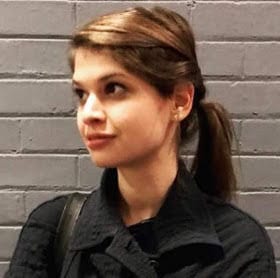 ANNA SHECHTMAN is a PhD Candidate in English Literature and Film and Media Studies at Yale University and a Senior Humanities Editor at the Los Angeles Review of Books.
ANNA SHECHTMAN is a PhD Candidate in English Literature and Film and Media Studies at Yale University and a Senior Humanities Editor at the Los Angeles Review of Books.

 ANNA SHECHTMAN
ANNA SHECHTMAN In this essay Mark Taylor reassesses Matthew Arnold’s place in the history of modern criticism, arguing that his most important contribution to that history was his refashioning of the critic as an empty and recessive type of agent. Arnold’s famous call for criticism to abandon the “sphere of practical life” was no mere slogan, but the product of an extended meditation on the nature of agency and action, undertaken in dialogue with the works of the philosopher Benedict de Spinoza. From Spinoza’s “lower” criticism, Arnold derived a method that both approaches individual texts as actions and stresses the critic’s role in “composing” those texts as individuals in the first place. To perform these functions, however, criticism must renounce its claim to count as an action in its own right. The essay traces the development of this method from Arnold’s early essays on Spinoza through his mature criticism of the 1860s and 70s and considers its bearing on the wide variety of practices that describe themselves as “critical” today.
In this essay Mark Taylor reassesses Matthew Arnold’s place in the history of modern criticism, arguing that his most important contribution to that history was his refashioning of the critic as an empty and recessive type of agent. Arnold’s famous call for criticism to abandon the “sphere of practical life” was no mere slogan, but the product of an extended meditation on the nature of agency and action, undertaken in dialogue with the works of the philosopher Benedict de Spinoza. From Spinoza’s “lower” criticism, Arnold derived a method that both approaches individual texts as actions and stresses the critic’s role in “composing” those texts as individuals in the first place. To perform these functions, however, criticism must renounce its claim to count as an action in its own right. The essay traces the development of this method from Arnold’s early essays on Spinoza through his mature criticism of the 1860s and 70s and considers its bearing on the wide variety of practices that describe themselves as “critical” today.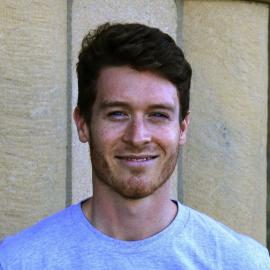
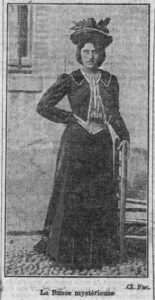 In the French National Archives, there is a foot-high folder comprising fin de siècle surveillance reports concerning foreign revolutionary activity on French soil. It contains only one photograph, which shows a woman with dark, chin-length hair, positioned outdoors on an expanse of cobblestone, near a window covered by metal bars. She stands with one hand on the back of a wooden chair and the other on her hip. She wears a black, feathered straw hat and a bolero jacket with decorative trim—an outfit, in the words of the accompanying police report, that “left a little to be desired.” As with many old photographic portraits that required protracted stillness from their subjects, the woman’s expression is difficult to discern, though she does appear to be smiling slightly. On the thick card stock of the photograph’s reverse is a label: “Nihiliste russe arrêtée le 24 septembre à Toulouse” (Russian nihilist arrested September 24 in Toulouse).
In the French National Archives, there is a foot-high folder comprising fin de siècle surveillance reports concerning foreign revolutionary activity on French soil. It contains only one photograph, which shows a woman with dark, chin-length hair, positioned outdoors on an expanse of cobblestone, near a window covered by metal bars. She stands with one hand on the back of a wooden chair and the other on her hip. She wears a black, feathered straw hat and a bolero jacket with decorative trim—an outfit, in the words of the accompanying police report, that “left a little to be desired.” As with many old photographic portraits that required protracted stillness from their subjects, the woman’s expression is difficult to discern, though she does appear to be smiling slightly. On the thick card stock of the photograph’s reverse is a label: “Nihiliste russe arrêtée le 24 septembre à Toulouse” (Russian nihilist arrested September 24 in Toulouse).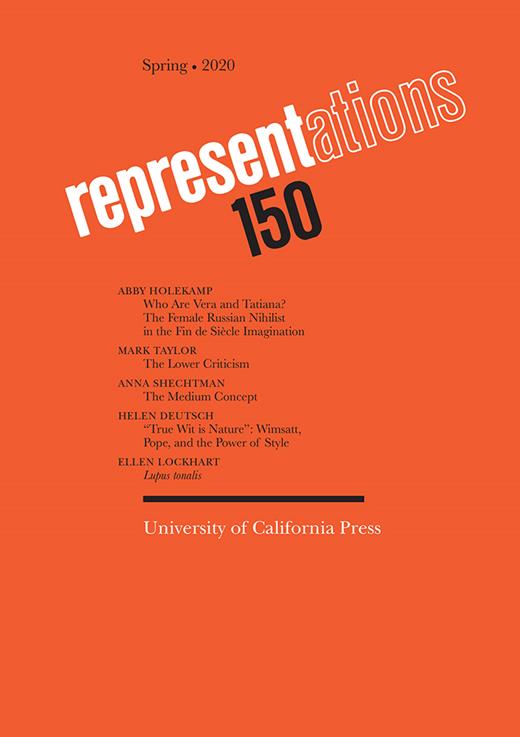
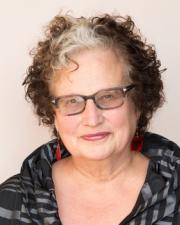

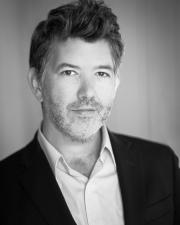
 Published in 1990 (with a portion initially written as early as 1983–84), Eve Kosofsky Sedgwick’s Epistemology of the Closet was written in the mid- and late-1980s context of an “open season on gay men” in public discourse (as she put it)—not to speak of gay bashing and an apocalyptic medical crisis. By now there’s an extensive secondary scholarship on Sedgwick’s literary criticism and queer theory. But to my knowledge none of it pursues the thread I’m going to try to draw out here.
Published in 1990 (with a portion initially written as early as 1983–84), Eve Kosofsky Sedgwick’s Epistemology of the Closet was written in the mid- and late-1980s context of an “open season on gay men” in public discourse (as she put it)—not to speak of gay bashing and an apocalyptic medical crisis. By now there’s an extensive secondary scholarship on Sedgwick’s literary criticism and queer theory. But to my knowledge none of it pursues the thread I’m going to try to draw out here. Of the essay, Banerjee herself writes: “By proposing a quantitative game-theory model of the marriage plot in Jane Austen’s Emma, the essay demonstrates that free-market moral philosophy underwrites Austen’s representation of matrimony and key formal elements of her writing—particularly, matters of verbal profusion. Her famed stylistic ‘economy’ is revealed to be structured by the emerging capitalist economy that Adam Smith theorized in The Wealth of Nations. Establishing the correspondences among several kinds of economy, the essay unites economic and formal approaches to Austen’s work.”
Of the essay, Banerjee herself writes: “By proposing a quantitative game-theory model of the marriage plot in Jane Austen’s Emma, the essay demonstrates that free-market moral philosophy underwrites Austen’s representation of matrimony and key formal elements of her writing—particularly, matters of verbal profusion. Her famed stylistic ‘economy’ is revealed to be structured by the emerging capitalist economy that Adam Smith theorized in The Wealth of Nations. Establishing the correspondences among several kinds of economy, the essay unites economic and formal approaches to Austen’s work.”
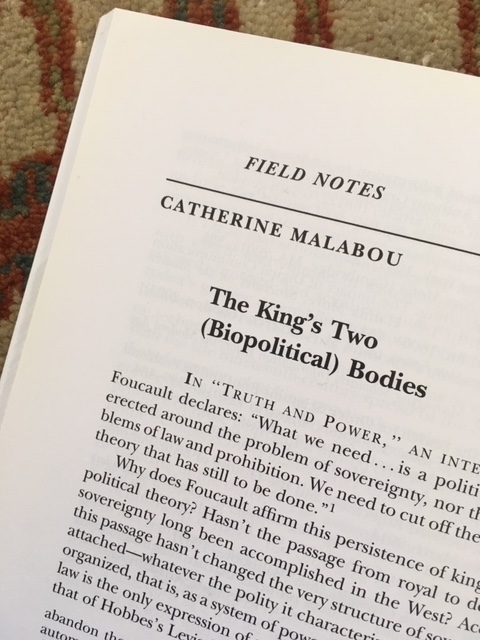 Field Notes, brief commentaries on the state of the disciplines, have been appearing in the journal periodically over the last decade. These short essays typically arise in response to specific current issues in the intellectual arena. Recent Field Notes include Bernard Stiegler’s essay “
Field Notes, brief commentaries on the state of the disciplines, have been appearing in the journal periodically over the last decade. These short essays typically arise in response to specific current issues in the intellectual arena. Recent Field Notes include Bernard Stiegler’s essay “ In recognition of the impact of coronavirus on campus instruction and the rise of unplanned distance learning, University of California Press is pleased to make
In recognition of the impact of coronavirus on campus instruction and the rise of unplanned distance learning, University of California Press is pleased to make